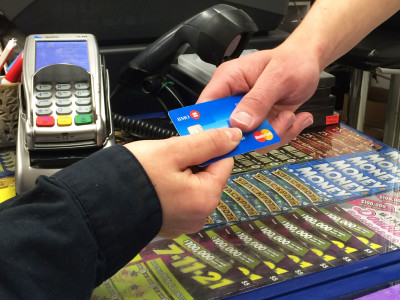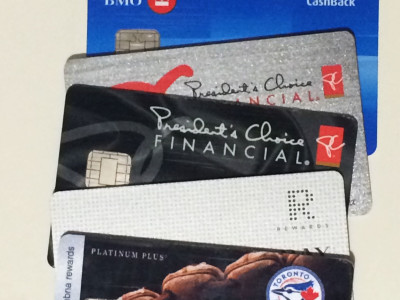Students up to their necks in credit card debt

Experts warn students that a card can help build a good credit rating, but it can take years to repair bad credit. (Photo by Olivia Little/The Sheridan Sun)
BY OLIVIA LITTLE
Troy Mason cut up his credit card after experiencing first hand how easy it is to fall into debt.
The 21-year-old third year Finance student got his first credit card last year because he wanted to start building his credit for his future.
“I fell into a debt of $900 because I had lost track of my credit card bills,” he said. “I was lucky because I caught it early just before it was about to max out.”
After paying it off and realizing how easy it is to accumulate such a large debt in such a short amount of time, he decided to cut it up so that it wouldn’t happen again.
“Credit card debt is such a large issue among college students because a lot of us are ignorant to other options of building credit rating or otherwise securing credit,” said Mason. “[Credit cards] can be disastrous especially if you’re the type to procrastinate or otherwise just aren’t very good with money.”
Scott Hannah, president and CEO of the Credit Counselling Society, said that although a credit card is the best way to start building credit, students should be careful to not severely damage their credit, which can take years to repair.
“Having one card with a low limit like $1,000 is a good way to build a good credit rating. [Try to only use] the credit card for things that you need vs things that you want and always have the funds in the bank to pay the balance in full so that you do not incur expensive interest charges.”
He said that like Mason, many students get their first credit card because they want to start building their credit. There are also other reasons why students take the plunge.
“Purchasing items and services online is safer with a credit card than a debit card from a security/fraud perspective,” said Hannah. “Also at times it’s because there was a special enticement or giveaway attached to accepting a credit card from a particular bank or credit card company. And for others, it helps them to manage their expenses if they are running short or have an unexpected financial emergency to deal with.”
Hannah said that students can quickly end up using their credit card more often because they’re not immediately losing money from their wallet.

(Photo by Olivia Little/The Sheridan Sun)
“[Credit cards] don’t have the same emotional impact on a person when you pay for something with cash,” he said.
“Opening up your purse or wallet to buy something and taking the money out and then seeing an empty wallet typically makes a person pause for a second to think about the item they are about to buy. With a credit card, the card leaves your wallet and then goes back in and there is no immediate impact.”
Hannah said that it’s easy, especially for students, to fall into debt because of their limited funds and not having a plan in place to manage income and expenses.
“While they are in school they may not have an income during the school year or only a part-time income that covers some of their living expenses and they may continually use credit to cover off the shortfalls in their budget,” he said.
“Once they have run up the balance on a credit card(s) they may find that all they can do is pay the small minimum payment each month, which will take them years to pay off.”
If students only pay the minimum payment of 3 per cent with an annual interest rate of 20 per cent, they are going to end up paying possibly hundreds of dollars in interest alone.
“The other issue is that not enough thought goes into determining how the student is going to pay off the debt they incur before they use their credit card,” Hannah said. “Often times we will hear from students that they will figure out how they will pay the debt off later on, which is scary.”
Tara Guyatt, 28, first year Animal Care student who worked as a debt collector for a collection agency last year after graduating from the Office Administration program at Sheridan, said that she had to collect from many students who weren’t making their minimum payments during her time at the agency.
“I would say about 85 per cent of the people were students or were at least between the ages of 18 and 23,” she said.
“Most [students] aren’t properly educated about credit cards and how they work and the interest rates. Most just get them to make online purchases and never bother to read the fine print.”
Hannah agrees and says that there are many terms that most students are probably not aware of.
“For instance if you take out a cash advance on a credit card there is an automatic $5 fee. If you go over your credit card limit you will be charged an over-limit fee each month until your balance is below your approved limit and if you’re late with your payment, many credit card companies will increase your interest rate by five per cent for a whole year.”
He advises students to educate themselves before signing up for a credit card.
“Students are great learners and know how to absorb information. Learning how to be smart with money is not rocket science. It just takes a little time and practice to become proficient with money and credit,” he said. “We strongly encourage students to improve their financial literacy and to seek information and help before they find themselves in trouble.”




